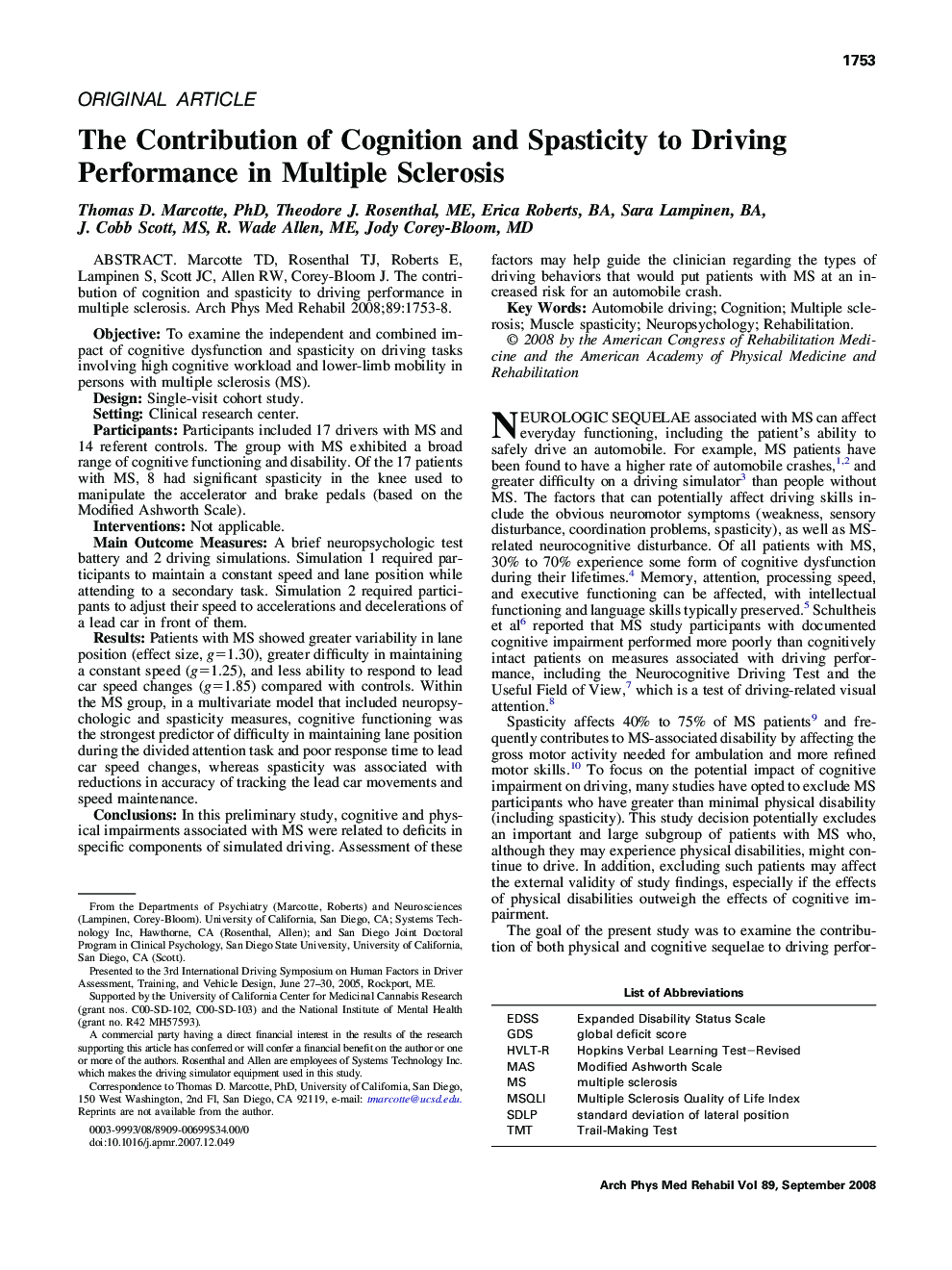| کد مقاله | کد نشریه | سال انتشار | مقاله انگلیسی | نسخه تمام متن |
|---|---|---|---|---|
| 3450452 | 1595775 | 2008 | 6 صفحه PDF | دانلود رایگان |

Marcotte TD, Rosenthal TJ, Roberts E, Lampinen S, Scott JC, Allen RW, Corey-Bloom J. The contribution of cognition and spasticity to driving performance in multiple sclerosis.ObjectiveTo examine the independent and combined impact of cognitive dysfunction and spasticity on driving tasks involving high cognitive workload and lower-limb mobility in persons with multiple sclerosis (MS).DesignSingle-visit cohort study.SettingClinical research center.ParticipantsParticipants included 17 drivers with MS and 14 referent controls. The group with MS exhibited a broad range of cognitive functioning and disability. Of the 17 patients with MS, 8 had significant spasticity in the knee used to manipulate the accelerator and brake pedals (based on the Modified Ashworth Scale).InterventionsNot applicable.Main Outcome MeasuresA brief neuropsychologic test battery and 2 driving simulations. Simulation 1 required participants to maintain a constant speed and lane position while attending to a secondary task. Simulation 2 required participants to adjust their speed to accelerations and decelerations of a lead car in front of them.ResultsPatients with MS showed greater variability in lane position (effect size, g=1.30), greater difficulty in maintaining a constant speed (g=1.25), and less ability to respond to lead car speed changes (g=1.85) compared with controls. Within the MS group, in a multivariate model that included neuropsychologic and spasticity measures, cognitive functioning was the strongest predictor of difficulty in maintaining lane position during the divided attention task and poor response time to lead car speed changes, whereas spasticity was associated with reductions in accuracy of tracking the lead car movements and speed maintenance.ConclusionsIn this preliminary study, cognitive and physical impairments associated with MS were related to deficits in specific components of simulated driving. Assessment of these factors may help guide the clinician regarding the types of driving behaviors that would put patients with MS at an increased risk for an automobile crash.
Journal: Archives of Physical Medicine and Rehabilitation - Volume 89, Issue 9, September 2008, Pages 1753–1758